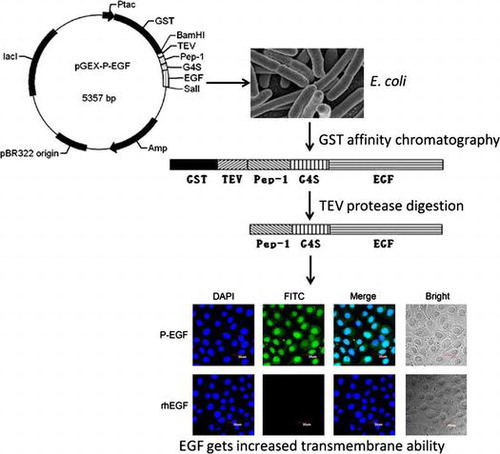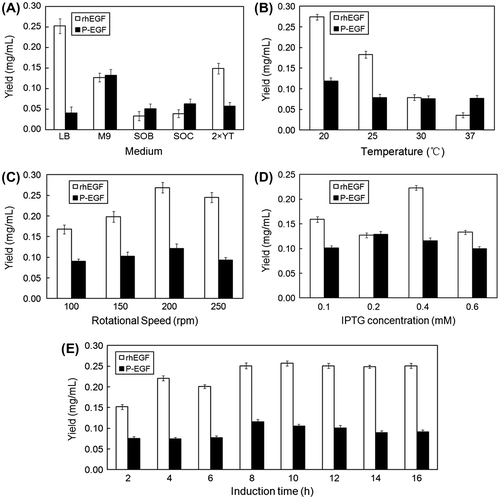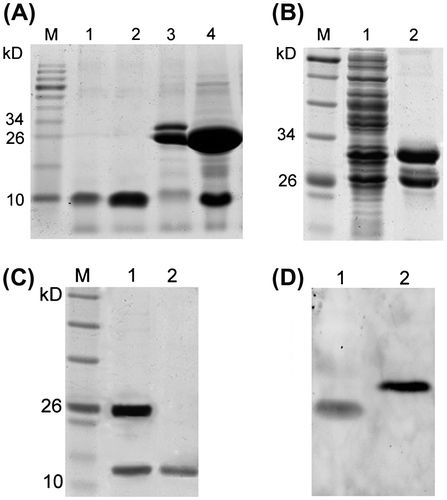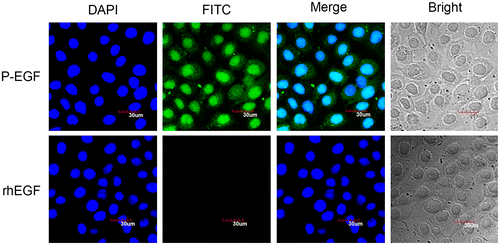Figures & data

Fig. 1. Optimization of the fermentation conditions for the soluble expression of recombinant rhEGF and P-EGF.

Fig. 2. Purification and identification of the recombinant proteins.

Fig. 3. Effects of rhEGF and P-EGF on the migration and proliferation of COS-7 fibroblast cells.


